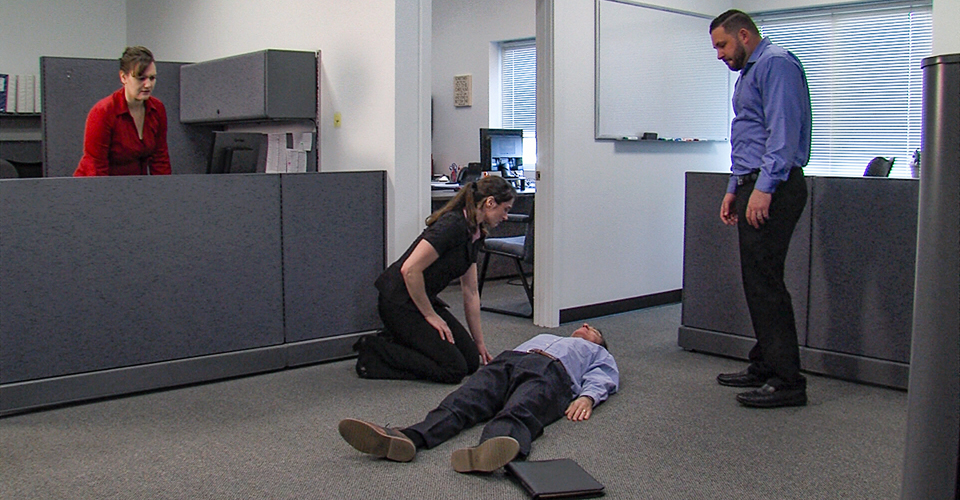Each year, the American Heart Association produces an update on heart disease and stroke statistics. The latest version, Heart Disease and Stroke Statistics— 2019 Update, has recently been released with updated information on sudden cardiac arrest from the Resuscitation Outcomes Consortium (ROC) and the Cardiac Arrest Registry to Enhance Survival (CARES).
The Sudden Cardiac Arrest Foundation offers a summary from the update, focusing on out-of-hospital cardiac arrests (OHCA) and how these incidents are handled prior to admission to a hospital. As with previous years, we see anew how much bystander intervention matters and how much more needs to be done to empower those in our workplaces and communities with the lifesaving skills of CPR and AED use:
“There are more than 356,000 out-of-hospital cardiac arrests (OHCA) annually in the U.S., nearly 90% of them fatal.... According to the report, the incidence of EMS-assessed non-traumatic OHCA in people of any age is estimated to be 356,461, or nearly 1,000 people each day. Survival to hospital discharge after EMS-treated cardiac arrest is about 10%.”
-
OHCA in adults is witnessed by a layperson in 37% of cases or by an EMS provider in 12% of cases. For 51% of cases, OHCA is not witnessed.
-
Survival to hospital discharge after EMS-treated cardiac arrest for adults was [10.4% - 11.4%]
-
Among adults treated by EMS, 25% had no symptoms before the onset of arrest.
-
Survival to hospital discharge was 10.7% among children (8.2% with good neurological function).
-
Unadjusted survival to hospital discharge after EMS-treated OHCA increased from 10.2% in 2006 to 12.4% in 2015.
Bystander Emergency Care Training and Intervention
-
Rates of layperson-initiated CPR and layperson use of AEDs have increased slightly over time. In 2017, laypersons initiated CPR in 39.4% of cases, used AEDs in 6% of cases, and delivered a shock in 1.6% of cases, based on CARES data.
-
The median annual CPR training rate for U.S. counties was 2.39%, based on data from the AHA, American Red Cross and the Health & Safety Institute, the largest providers of CPR training in the U.S. Training rates were lower in rural areas, areas with high proportions of black or Hispanic residents, and counties with lower median household incomes.
-
The prevalence of reported current CPR training was 18%, and the prevalence of having CPR training at some point was 65%.
-
Large regional variations in survival to hospital discharge (range, 3.4%–22.0%) and survival with functional recovery (range, 0.8%–20.1%) are observed between 132 counties in the United States. Variation in rates of layperson CPR and AED use explained much of this variation.
You can download a copy of the update here.
Certainly, trained lay providers have stepped up and saved lives through their interventions in emergencies, but much work remains to be done.
Studies show that early bystander initiation of CPR and the use of an AED can double or even triple an individual’s survival form sudden cardiac arrest. For Heart Month and every month, it’s our privilege to support the tens of thousands of emergency care instructors that make up our ASHI and MEDIC First Aid family of Training Centers. Thank you for everything you do as we work to make our workplaces and communities safer.
Interested in joining our quest to bring the lifesaving skills of CPR, AED, and first aid to your area? Become an ASHI or MEDIC First Aid instructor! Click the button below to download our eBook, Getting Started in Emergency Care Training.








.png?width=600&name=HSI-CTA-EmergencyCareTraining%20(1).png)











Comments